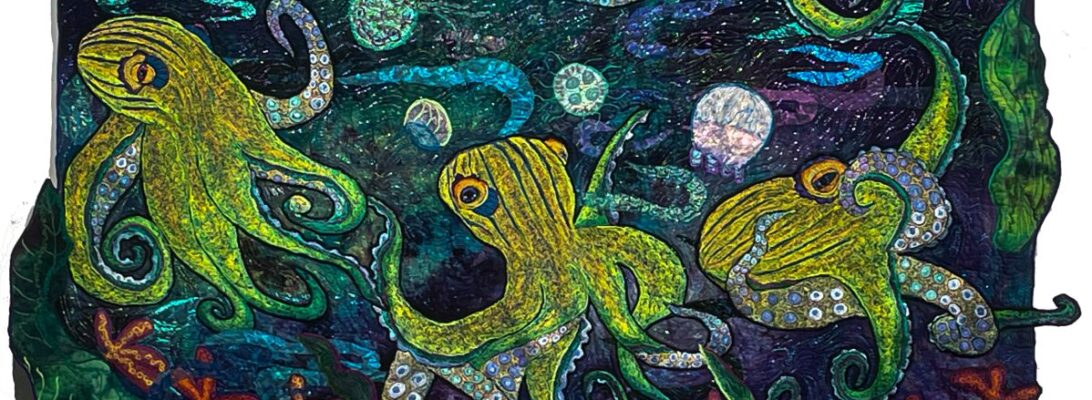
What do you do when your techniques are killing your machines?
This is about component embroidery. Lately, I’ve leaned more and more on component embroidery to create large astonishing embroidered images. I love the work it creates. I am completely reliant on my machines.
I have a love/hate relationship with most of my sewing machines. I really love them when they work. I’m in abject hell when they break down.

Since I’m a Bernina girl from way back, I’m used to tough well-built machines. Yesterday, my ancient 930 had a moment. I thought it was a screwdriver fix; It was not. We’re playing mix and match between the two 930s in the studio. Neither is quite ready for prime time. It has brought to mind how intensive my work is.


That was underlined by the 3 220s I managed to break last year, and my 770 which has spent 7 months out of the last year in need of several kind of repairs. And is once again in the shop.
These are lovely machines. They’re built tough, and I’m still having them break under me like I was shooting horses I’m riding on in a battle. I’m devastated. I know better than to have only one functional machine. Because always, inevitably, something will break.
When I talked with my mechanic she said “You do know you sew more than other people..” Which means I stitch very heavily to make my images. Meaning perhaps I’m asking more out of a machine than it’s built for.
Which leads to the question, do I need a different machine? Do I need a commercial machine?
I went through this several years ago when I bought my 770 Bernina. It’s fast. It’s got that nice long arm and some lovely features. It does not put up with mad-speed sewing. I love it. I’m afraid of it too. It threw its hook at me through the door on the bobbin mechanism. I wish I were kidding. And I don’t know what to do about a machine that’s off more than it’s on.
So here’s my 2025 Challenge.
Do I change my work because my machine won’t do it? Do I find another way? Do I look for other tools? Or do I back away from a stunning technique that lets me do things past my earlier abilities?
Which leads me to humming something like a Sheryl Crow song. “Are you tough enough to be my sewing machine?”
Being an artist is only peripherally about making art. It’s mostly about developing skills, ideas and visions. The art is a byproduct. It is a picture of where your art is at a particular moment. This is why I can always let go of a piece of art if it raises my abilities as an artist. Any artist’s first creation is the skills, techniques, and vision you make art from.
I’m looking. I need a zigzag machine that is commercial grade I can control the speed on. And I need to find some money to look with. I’m always willing to give up a piece of art to further what I can do as an artist.

Those of us who live an artist’s life live with constantly unbalanced finances. Don and I are on social security. I don’t discuss my difficulties hoping for a handout. But I have used my art to fund things I couldn’t buy any other way. I’ve offered work of mine at dead rock bottom prices, when the need arises. I’ve never asked for money itself. I’ve offered the work I have to make what I need happen. I’m doing that now.

These pieces represent work I couldn’t have done ten years ago. They’re made with component quilting elements, separately embroidered and incorporated into the quilt itself. It’s changed what I can do. I need a tough enough machine to do it.
So my quilts are back at 40% discount, on Etsy.
If there’s something you are in love with, this is the time. And I’m open to offers. I am a motivated seller. If you wish to see more information on my body of work, it’s also on my Portfolio Page. The price on the portfolio does not reflect the sale price, but you can click through from the portfolio page to the Etsy shop.
Also, if you have knowledge about industrial or particularly tough zigzag machines, I’d love to talk with you. I need more options, and would appreciate your expertise. And if you have questions about a particular quilt, let me know.
Thank you!
Ellen

































































































































